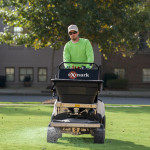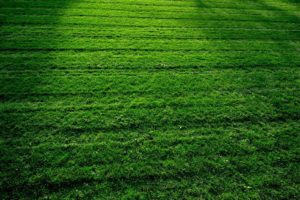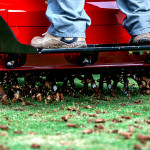If you were one of the many homeowners affected by flooding in 2016, you’ll have quite a bit of work ahead of you to return your lawn to its former glory. This is especially true for lawns that were either underwater for more than four days, covered with more than an inch of silt, or flooded by saltwater.
In these cases, the turf may be dead and require a complete removal and re-seeding. Hardier plants like trees, shrubs, Bermuda grass, Bahia grass, and perennials may survive being underwater this long, but there is no guarantee.
Despite the traumas your lawn underwent, there is still a chance it can survive—provided you take the necessary steps now in order to cultivate growth for next year.

Flood Lawn Recovery will require you to rebuild the landscape and get your lawn back to its original proportions.
Step One: Rebuild the landscape. The first thing you want to do to restore flood damage is to get your lawn back to its original proportions (or as much as possible). Deposits of silt and debris often reshape your lawn, making it uneven with varying grades. Silt can be scraped off and worked into the soil (or, where there is too much of it, hauled away). Areas that were washed away can be filled in with topsoil. The more even and stable you can make the lawn, the better.
Step Two: Aerate the soil. More than anything else, your lawn needs a way to get oxygen and dry up, and aeration is the best way to do that. If aeration is normally a part of your fall maintenance routine, perform it soon after the flood waters recede instead. If it’s not part of your routine, now is a good time to start it. Get that lawn open and dried, even if it means you have to aerate several times this fall.
Note: If your flooding occurred late in the season, the first two steps are the best you can do for the year. Any attempts to recover your lawn in freezing conditions are likely to be met with few results. As long as the lawn is dried, even, and has good soil for next year, you can rest easy. Do what you can to limit foot traffic until the spring growing season, and avoid the use of any harsh de-icers that contain chemicals.

Full Lawn Recovery will fertilizer and seed. A Spreader-Sprayer will help evenly distrubute fertilizer and seed.
Step Three: Apply a starter fertilizer. Treat your entire lawn like it’s growing for the first time, and you can’t go wrong. This means buying starter fertilizers and planning for new growth just as you would a blank slate. Even areas with turf still growing can use a boost, so plan to fertilize and seed that area, as well.
Step Four: Seed and/or over-seed. Seeding is best done in early fall or late spring. Depending on the timing of your flood, you should plan this accordingly. If flooding is likely to return another time, look for hardier strands of grass that can stand up to the damage. Otherwise, choose one that’s right for your area.
Note: Applying sod is also a choice if you want to enjoy a green lawn without the bother of growing grass from scratch. In this instance, you want to ensure that the soil underneath is fully dry and capable of supporting new growth.
You’ll also want to take note of issues like pest growth, mosquitos, and standing water issues—not to mention damage to the sprinkler system or water that gets underneath concrete and freezes to cause breakage. For all these reasons, drainage and aeration remain the most important steps in lawn flood recovery. You should also plan to take it easy on the newly growing grass, making sure you never mow more than 1/3 of the length at any given time.
SHARE







